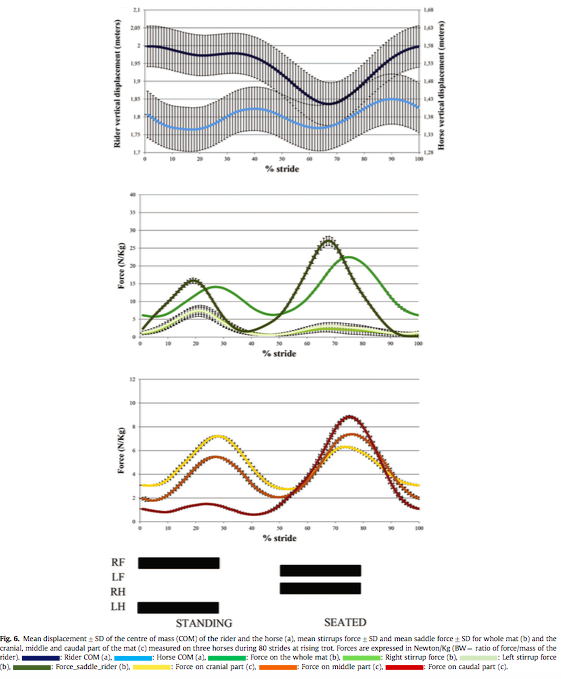
Effect of rider position during trot on the horse
The most important outcome of this study is that increased pressure is associated with a reduction of the horse’s back mobility in caudal thoracic and thoracolumbar regions. The effect of the rider on the horse’s back kinematics is highly dependent on his position and these finding should be taken into account for the rehabilitation of horses with back injuries.
The aim of the study was to evaluate the effect of the rider during rising trot on the back pressure distribution, spine movement, stirrup forces and global locomotion of the horse.
One expert rider rode 3 horses which fitted one saddle perfectly. The measurements were done with five inertial sensors with axis accelerometers, gyroscope and magnetometer glued on the horse. With a pressuremat the pressure distribution between the saddle and back was measured. The stirrup force was measured with a strain gauge based force sensor. Finally a 2D motion capture measured the motion and speed of the horse. The horse was ridden at right-hand and left-hand side rising trot at the same speed for six trials
During sitting phase the pressure under the saddle, the Range of Motion of the upper thoracic and lumbar spine increased significantly compared to standing phase while the vertical displacement of the rider approximated centre of mass was significantly lower during sitting phase.
Martin, P., et al. Journal of Biomechanics (2016). All rights reserved to Elsevier Ltd. Click here for the Pubmed summary Click here for the full-text article


